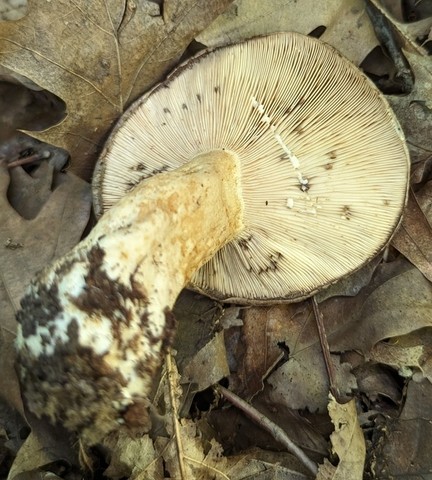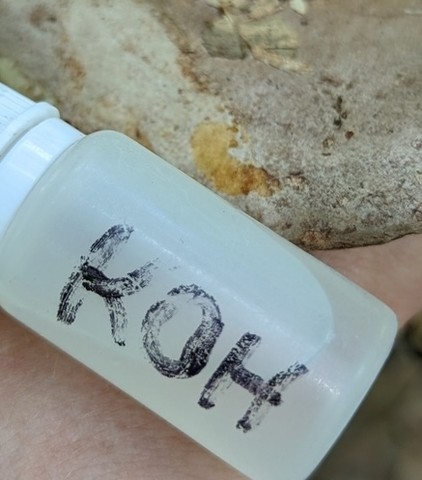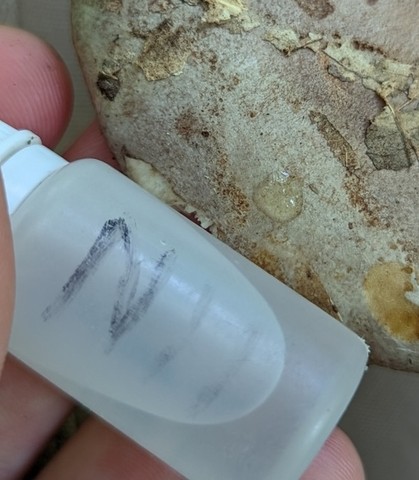Clay-Gilled Milkcap
Lactarius argillaceifolius-IN02
Life > Fungi > Basidiomycota > Agaricomycotina > Agaricomycetes > Russulales > Russulaceae > Lactarius
Description
The Clay-Gilled Milkcap (Lactarius argillaceifolius) is a mycorrhizal mushroom that can be found growing on Oak forests in the summer. This one was found growing alone in low open mixed Oak/Hickory woodland near Northern Red Oak, Ash, and American Hophornbeam trees at Indian Cave State Park in southeastern Nebraska. It's well camouflaged in its environment and easily blends in with the surrounding leaf duff and woodland debris.
The cap is dull colored, flat to depressed in the middle and the surface is tacky, often adhering to leaves as if attached by glue. The gills are attached and running down the stem (decurrent) and are cream-colored becoming darker with age. The stem tapers at the base. When cut, it exudes a cream-colored latex, which later turns dark gray, producing the same color when the mushroom is bruised. The taste is peppery/spicy (acrid). The spore print is pale-yellow.
Observations
June 14th, 2023 Indian Cave State Park

111
Lactarioid. Growing alone in low open mixed oak/hickory woodland near Northern Red Oak, Ash, American Hophornbeam trees.
-
Cap is tacky with woodland duff attached.
-
Latex cream-colored, later becoming dark gray.
-
Taste: mildly bitter, then acrid (spicy).
-
KOH yellowish-orange pileipellis and orangish on stipe.
-
Ammonia slightly olive on pileipellis.
-
Latex pale cream color initially, later staining the gills dark brown to black.
GAACGCACCTTGCGCCCCTTGGTATTCCGAGGGGCACACCTGTTTGAGTGTCGTGAAAATCTCAACCTTCTCGGTTTCTTCTGGACACCGAAGGAGGCTTGGACTTTGGAGGTCTCTGCTGGCATCTCTTGCCAGCTCCTCTCAAATGAATTAGCGGGGTCCTCTTTGCCGGTCCTTGACATGTGATAAGATGTTTCCATGTCTTGGTTCATGGCTCTGTTGCTTTTGGGACCTGCTTCTAACCGTCTCGATGACAATGTTTGAGTGTGTCTCCCTTCTCGGGAAAACACTCTCAAACCCACGAACCCTTGACCTCAAATCGGGTGAGACTACCCGCTGAACTTAAView MycoMap DNA Results
References
Kuo, M. (2011, February). Lactarius argillaceifolius. Retrieved from the MushroomExpert.Com Web site: http://www.mushroomexpert.com/lactarius_argillaceifolius.html
Created December 15, 2025 at 10:41 AM








